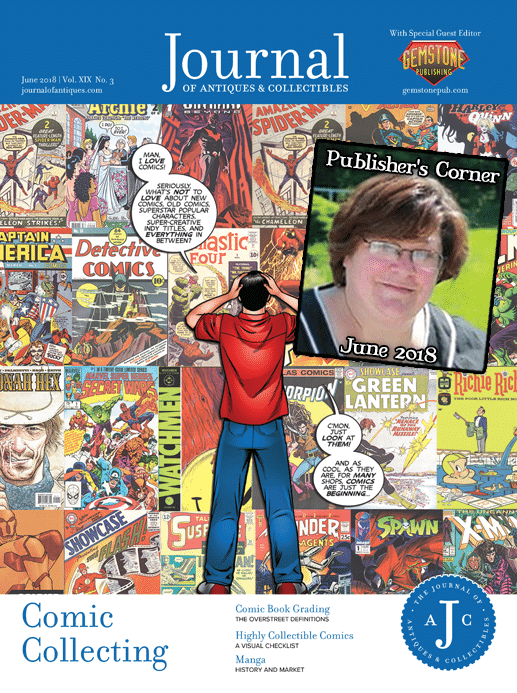Comic Collectibles
by Maxine Carter-Lome
Like the baseball cards I purchased with my allowance, and flipped and traded with friends at school, comics were very much a part of my childhood. At the candy store down the block from my elementary school I could buy both: the latest installments of the comics I loved and a pack or two of baseball cards. When it came to my favorites, I was intent on buying every issue that came out so I could read them, share them with my friends, and refer back to them at a future time. Their wear and tear reflected the hours of enjoyment they gave me.
As I grew older, comic books and baseball cards were replaced by Barbie dolls, and later by albums and theater Playbills. When it came time to leave home for college, my closets were purged of these collections from my youth. Who knew that one day they would be more valuable than the hours of personal enjoyment experienced? Obviously, and thankfully, there were some who had the forethought when they first purchased these inexpensive items to preserve rather than devour them. It is these pristine, “like new” issues of vintage comics that continue to drive collectors crazy.
If you are a reader of J.C. Vaughn’s monthly “Comic Character Collectibles” column in the Journal, or follow Ken Hall’s “Gavels ‘n’ Paddles” column, then the stunning prices being realized for vintage comic books and baseball cards at auction today should come as no surprise.
Part of the recent surge in comic book values has to do with the wave of blockbuster movies that are bringing comic book superheroes and villains to the big screen. Their back stories and adventures run long and deep, with millions of followers over generations following their exploits, issue by issue. This nostalgia is driving both box office numbers and auction prices. In the past year, a high-grade copy of Amazing Fantasy #15 (Marvel, 1962), CGC VF+ 8.5 sold for $155,350 at Heritage’s February Vintage Comics & Comic Art Signature Auction; a Batman #1, CBCS 7.5 sold for $241,500 through Weiss Auctions, and a Detective Comics #27 May 1939 CGC 5.0 VG/Fine (First Batman) sold for $569,273.61 (includes 18% Buyer’s Premium) at a Hake’s auction ending March 15, 2018.
While both movie box office sales and new comic book sales hit a bit of a slump in 2017, 2018 movies such as Black Panther and Marvel’s Avengers: Infinity War (expected to top $1 billion by the end of the first week in May according to Forbes magazine), and the never-ending Batman, Superman, and Spiderman re-boots are creating renewed interest in comic characters and vintage comics, and in the early editions that first introduced these superheroes and their story.
The popularity of these movies among a new generation of fans and collectors is also fueling attendance at comic-cons around the country (comic book festivals focused on comic books and comic book culture), and the resurgence of independent comic book stores, which suffered the same fate as independent record stores and bookstores and are now enjoying a come back among fans and collectors. These are people who crave the old-school experience of the hunt for something new or unexpected, and being in the company of others who share their passion.
Another factor influencing comic-con attendance and the rise of independent comic book stores is the growing popularity of graphic novels. Graphic novels are, simply defined, book-length comics. It is distinguished from the term “comic book,” which is generally used for comics periodicals. Although the word “novel” normally refers to long fictional works, the term “graphic novel” is applied broadly and includes fiction, non-fiction, and anthologized work. According to Comichron, a resource for comics research, total comics and graphic novel sales to consumers in the U.S. and Canada reached $1.085 billion in 2016, a $55 million increase over sales in 2015. For many independent comic book stores, graphic novels help expand their market and give them a slight edge in their competition with independent bookstores for consumers.
When it comes to defining value in the comics market, the go-to resource is The Overstreet Guides. This month we took the unique step of inviting a guest editor to curate our editorial focus. Who better than J.C. Vaughn? The articles he brought into this issue on grading comics, Manga, and the most desirable comics on the market today provide a fun and interesting overview of the comics craze for those left in disbelief at the records being set at auction. At this level, condition is everything. Lesson learned – take care of your toys and one day your toys might take care of you!
-
- Assign a menu in Theme Options > Menus WooCommerce not Found





Related posts: